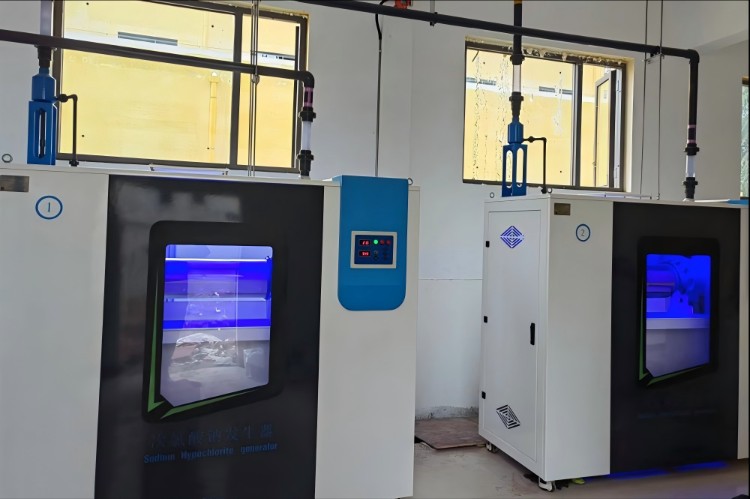On-Site Hypochlorite Generator for Safe Water
Introduction
We understand how critical safe water is. As an On-Site Sodium Hypochlorite Generator Manufacturer, we’ve witnessed the transformation from chemical delivery to generation in place. In this article, we’ll walk you through a hypochlorite generator for water treatment, a sodium hypochlorite generation system design, and real-world applications. I’ll be candid — this tech feels like magic when it works well.
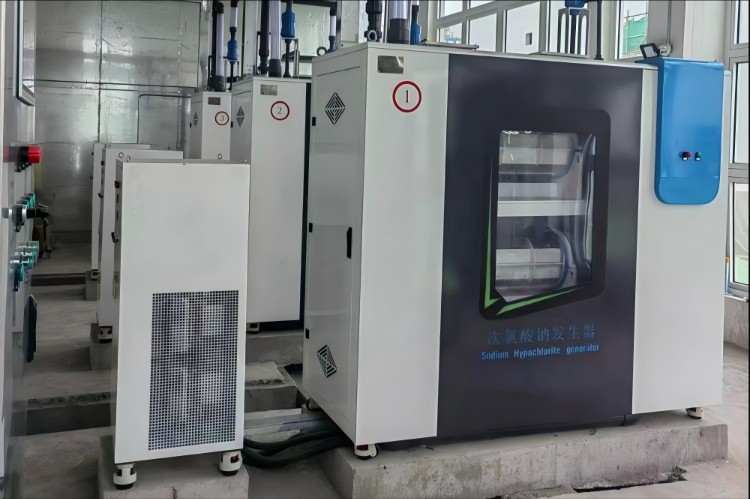
Why On-Site Hypochlorite Generation Matters
It eliminates hazardous chemical transport and storage risks.
You generate just what you need — no “old bleach” degrading in storage.
It gives you control over dosing in municipal water, cooling towers, pools, or wastewater plants.
It often pays back in 1–3 years, thanks to avoided chemical, transport, and safety costs.
So yes — it’s more than buzzwords. It’s smart, safer, sustainable disinfection.
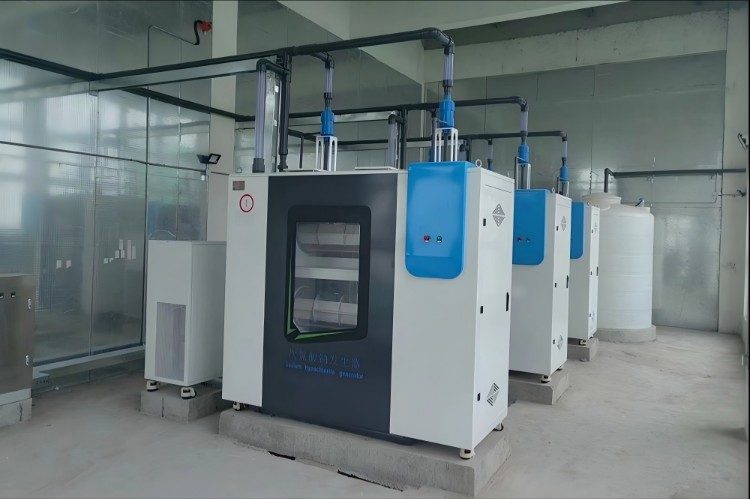
Core Concepts & Technology
What Is a Hypochlorite Generator for Water Treatment?
A hypochlorite generator converts salt (NaCl) and water into sodium hypochlorite (NaOCl) via electrolysis. That solution disinfects water by releasing chlorine species (HOCl / OCl⁻).
Electrolysis of Brine Solution: How It Works
You dissolve salt in water to form a brine.
You feed that brine into an electrolyzer cell.
Under electric current, chloride ions oxidize to chlorine (Cl₂) or hypochlorite (ClO⁻), depending on cell conditions.
Hydrogen gas forms at the cathode and is vented safely.
You often operate at low concentration (0.4–0.8 %) hypochlorite to keep it nonhazardous, which cuts regulatory burden.
This is the heart of NaOCl generation technology and the sodium hypochlorite production process.
Design Aspects: Cell Types & Materials
Membrane cell design gives higher concentration and energy efficiency.
Open cell / non-membrane is simpler but less efficient.
Use corrosion-resistant materials (titanium, mixed metal oxides) to resist chloride attack.
Modular cells allow scalable capacity.
Automation & Dosing Control
You can integrate automatic hypochlorite dosing system, real-time sensors, flow control, and protective interlocks. This gives you low maintenance disinfection, stable residuals, and effective control.
Applications Across Sectors
Drinking Water Disinfection & Municipal Systems
On-site chlorine generation offers a safer alternative to chlorine gas. Many utilities adopt electrochlorination systems to disinfect drinking water with consistent residuals.
Wastewater Treatment Plant Disinfection
After biological treatment, plants need to kill pathogens before discharge. We see many plants using hypochlorite generation systems rather than bulk bleach.
Industrial Water & Cooling Tower Disinfection
For cooling water, process water, or recirculating loops, on-site generation reduces chemical handling and lowers operating cost.
Swimming Pool Chlorination System
Even pool systems benefit. Instead of bulk chlorine or gas, on-site systems produce sodium hypochlorite safely, precisely, and with fewer handling headaches.
Farm Disinfection / Agricultural Use
Salt to bleach systems are used in farm settings for disinfecting barns, equipment, and water lines. Our niche in “salt to bleach system / farm disinfectant system” comes alive here.
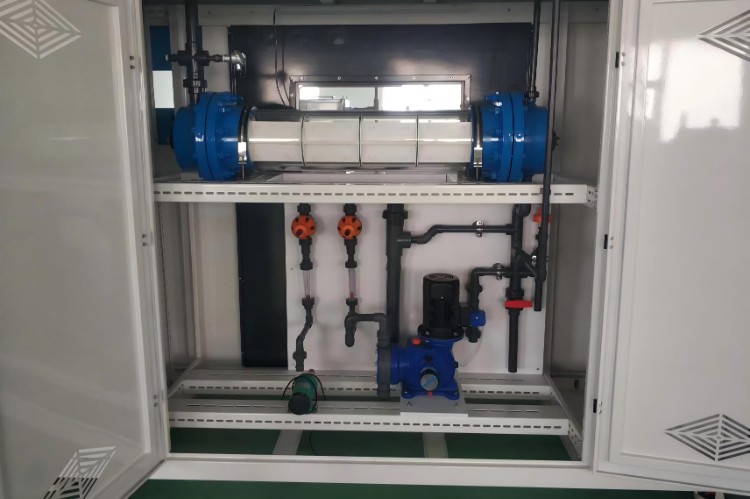
Advantages & Challenges
Advantages: Why It Wins
1. Safe & Sustainable
You avoid transporting and storing dangerous chemicals. You also reduce the carbon footprint of chemical logistics.
2. Low Maintenance Disinfection
The system runs automatically with minimal intervention, just periodic electrode cleaning.
3. Cost-Effective Disinfection Solution
Operational costs (salt + electricity) are much lower than buying, shipping, and storing bulk sodium hypochlorite.
4. Reduced Degradation & By-Products
Bulk bleach tends to degrade and form chlorate/perchlorate over time. On-site systems generate fresh hypochlorite just before use.
5. Reliable Supply
You are independent of chemical suppliers. No more delays or shortages.
6. Scalable & Modular
You can scale output by adding modules rather than installing an entirely new system.
Challenges & Mitigations
Challenge | Mitigation / Tip |
Hydrogen safety | Provide ventilation, detectors, system shutdown interlocks. |
Electrode fouling / scaling | Use soft water, periodic acid cleaning, or reverse polarity cleaning in advanced systems. |
Brine quality & salt purity | Use high purity salt and control impurities like Ca, Mg that harm cells. |
Upfront capital cost | Know that many users recover costs in 1–3 years. |
Regulatory & safety design | Design with corrosion-resistant generator design, safety systems, hydrogen control, oversize ventilation. |
Choosing the Right System
When you (or a client) consider a sodium hypochlorite generation system, check:
Required capacity and peak demand
Automation and monitoring level
Choice of membrane or non-membrane cell
Material durability (anodes, cathodes, piping)
Maintenance service support
Integration with existing plant controls
As manufacturers, we build systems to balance performance, cost, and durability. We aim to meet your industrial chlorination unit needs while minimizing your headaches.
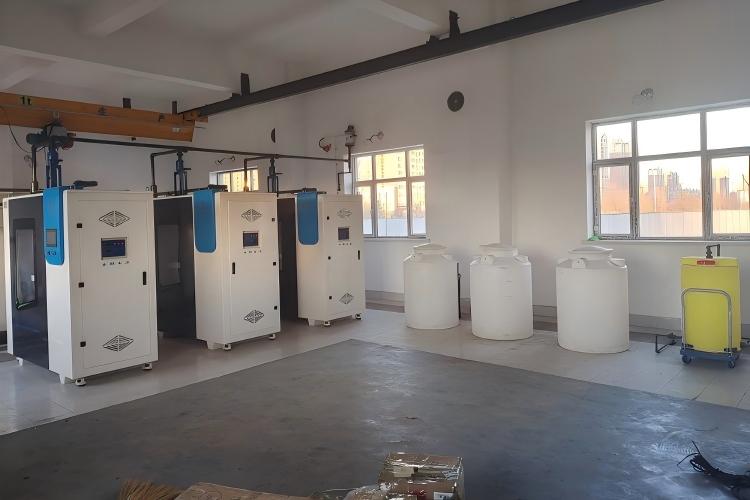
Case Insights & Trends
In Albuquerque, a switch to electrochlorination reduced reliance on chlorine gas and lowered risks.
Technologies now push toward true “chemical-free water treatment” (i.e., using just salt, water, and electricity).
Systems combining mixed oxidant generation (beyond NaOCl) gain attention for extra disinfection power and biofilm control.
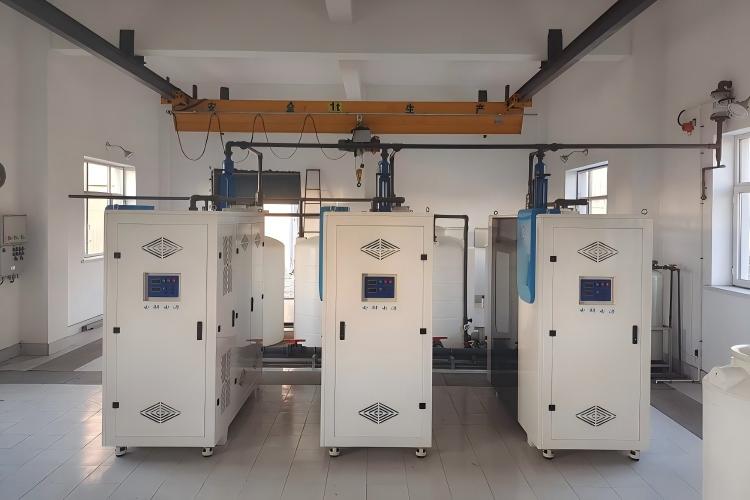
Summary & Why We Care
We believe safe, sustainable chlorination is the future. On-site hypochlorite generators bring you:
Autonomous and controlled on-site chlorine production
Cost savings vs bulk supplies
Fewer risks and greener operations
Versatility across municipal water treatment, industrial purification, pool systems, wastewater plants, and cooling towers
We’re passionate about helping partners deploy systems that truly work. If you want help sizing, customizing, or comparing suppliers (sodium hypochlorite generator suppliers), just ask.
